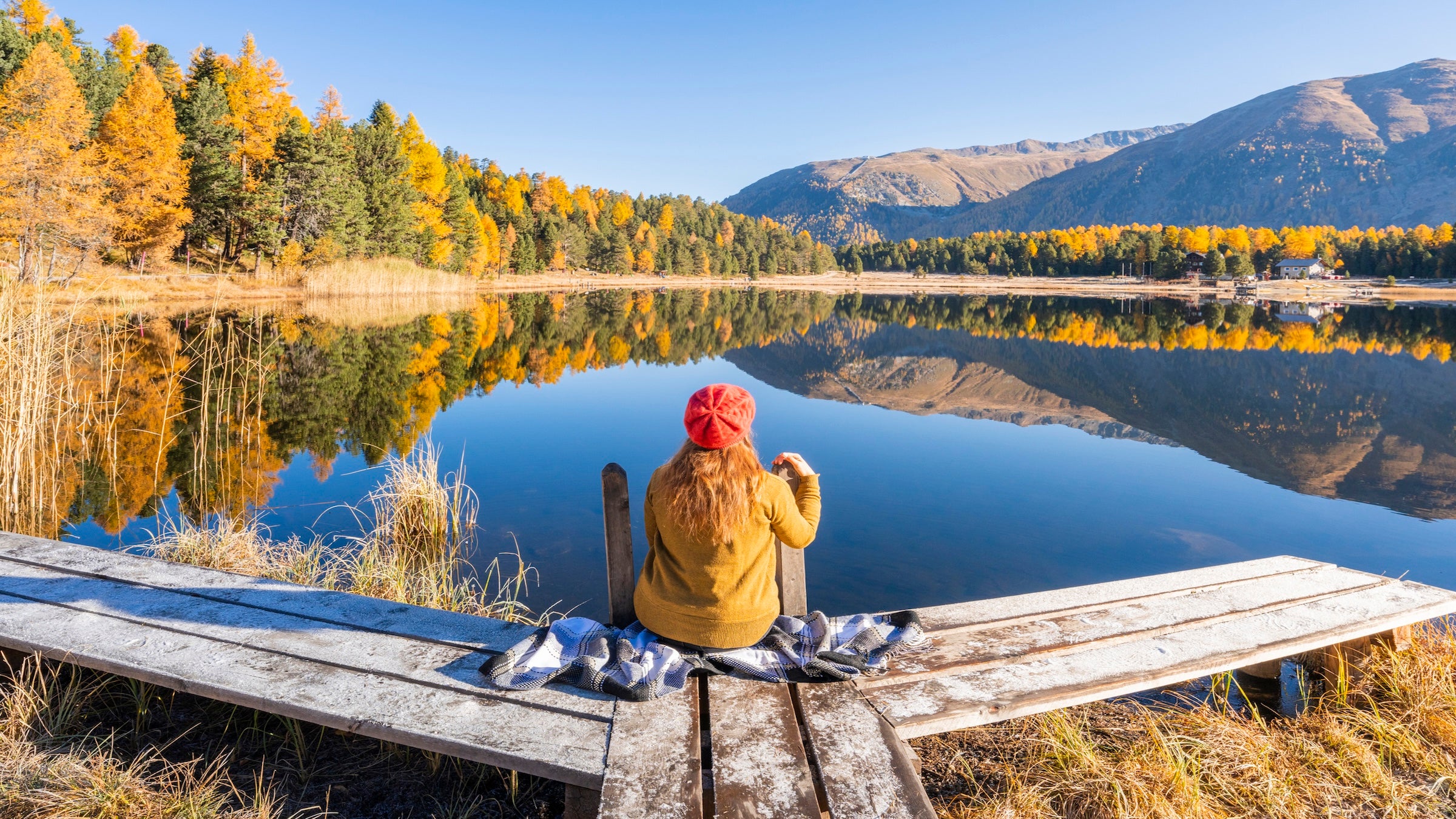Expect Peak Leaf Peeping This Fall in These 21 States, According to the Farmer’s Almanac

Francesco Vaninetti Photo/Getty Images
This year, experts predict 21 states across North America will experience the most vibrant fall foliage, making these the top stops for leaf peeping in the coming months.
Most states will begin to experience fall foliage around mid-September through early November. Those located in the northern and midwestern U.S. states can expect to see fall foliage by late September, according to The Farmer’s Almanac. Areas in New England, the Pacific Northwest, and the Blue Ridge Mountains will see peak foliage by mid-October.
When tree leaves change color depends on the latitude in which they’re located. As the days get shorter and temperatures cooler, trees slow their growth and production of the green pigment chlorophyll, shifting foliage from shades of green to deep hues of red, orange and yellow.
September 22 marks this year’s Autumnal equinox, when the Earth’s equator is directly aligned with the sun—one of just two days each year with roughly equal amounts of daylight and darkness.
The Best Places to Leaf-Peep This Fall
According to the Almanac, these are the top 21 places you can see fall foliage this year:
- Acadia National Park, Maine
- Ozark Mountains, Arkansas
- Adirondack and Catskill Mountains, New York
- Traverse City, Michigan
- Black Hills, South Dakota
- Blue Ridge Parkway, Virginia and North Carolina
- Kancamagus Highway, White Mountains, New Hampshire
- Pere Marquette State Park, Illinois
- Blue Ridge Parkway, Virginia
- Jackson, Wyoming
- Connecticut River Valley, Connecticut
- Logan Canyon Scenic Byway, Utah
- Cuyahoga Valley National Park, Ohio
- Buckhorn Lake State Park, Kentucky
- Vogel State Park and Chattahoochee National Forest, Georgia
- Door County, Wisconsin
- Poconos, Pennsylvania
- Green Mountain Byway, Vermont
- Gatlinburg & Smoky Mountains, Tennessee
- The Berkshires, Massachusetts
- Taos, New Mexico
A time-lapse map showing predicted peak foliage of these areas and more can be viewed here.
Since 1792, the Old Farmer’s Almanac has predicted weather forecasts, calculated tides, and compiled sunrise and sunset times. Forecasters at the Almanac compile their fall foliage predictions based on reports by readers. Though the publication claims 80 percent accuracy, others suggest they are only correct about half the time.
Regardless, foliage peepers say it’s best to visit these places when the weather is calm, as rain can make trees look soggy and wind can cause trees to prematurely lose their brightly hued leaves. Not all trees change color, so be sure to visit areas rich in broad-leaf deciduous trees, or those that shed their leaves annually, such as oak, birch and beech trees.
If you want to scout out the fall foliage ahead of visiting in person, the webcam site EarthCam has dozens of livestream views of fall foliage across North America, from Sitka, Alaska, to Rising Fawn, Georgia.